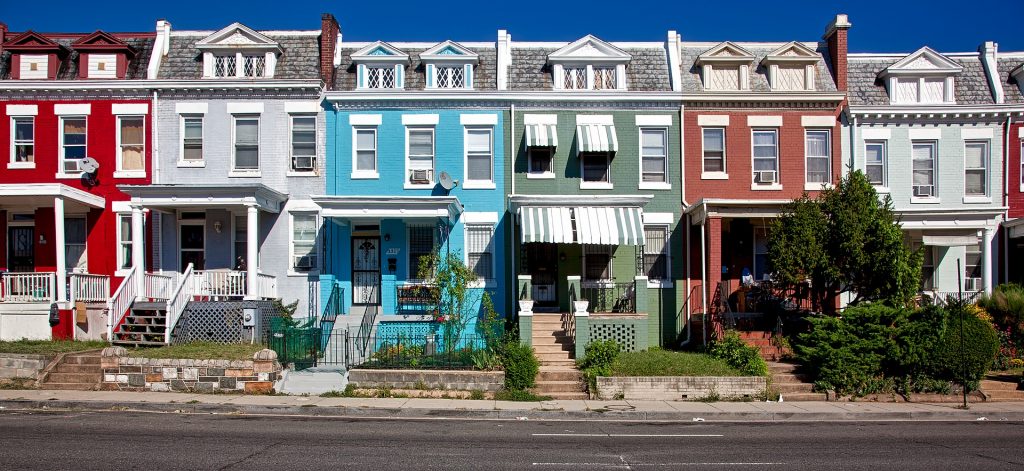The housing market boomed in 2021 like few could have expected. What is on the horizon in 2022? Home prices are rising to record highs, and many policymakers and industry professionals have begun turning to building to ease shortages.
Of course, the construction industry has been facing some pressing challenges, including hitches in global and national supply chains. This makes new home construction a continued challenge, even as demand exists to accelerate new housing.
Things may be taking a turn for the better in 2022, though. While new home construction will remain greatly impacted by the effects of the COVID-19 pandemic, there is hope for improvement in the year ahead.
Demand for New Homes Will Stay High
Many buyers hope the housing market will cool down in 2022, and while experts don’t think it will be as competitive, this is unlikely to be a dramatic shift — at least not one that turns the market away from being seller-friendly. A few factors are driving demand for new homes, primarily remote work and millennial families.
Millennials in their late 20s to 40s are coming to an age where they can buy their first homes. Several real estate experts have identified this as a key aspect of the housing boom, with no signs of dissipating in 2022. Some have even suggested that Gen Z, entering their 20s, is contributing to the surge in young people purchasing homes.
At the same time that thousands of buyers are entering the market, remote work is settling in for good. Since many employers no longer require employees to come into the office, people are beginning to move based on preference. Those who formerly worked in cities and rented apartments are now buying houses in the suburbs because they don’t need to commute.
An estimated 12.3 million new households formed in the U.S. between 2012 and 2021. During this period, only 7 million new homes were built. So, new home construction was already behind before the pandemic, which only made it all the more challenging to keep up with demand. In 2022, construction companies will have to work hard to catch up with an overwhelmed market.
The Impact of the Labor Shifts
In 2021, countless employers were seeing a surprising trend: what many business professionals are dubbing the Great Resignation. Over the past year, more than 20 million Americans have quit their jobs, largely in lower-paying sectors.
If people are leaving their jobs, doesn’t that mean that fewer people will be able to afford to buy or build houses? Not exactly. Since widespread resignations are primarily occurring in industries that historically have low wages, individuals in these jobs were less likely to buy a home to begin with. Plus, many career moves are being made to access new opportunities that open up financial doors for these workers.
Importantly, labor mismatches have a big impact on construction labor. This is a big issue in new home construction, especially considering that the sector was already experiencing staffing shortages before the pandemic. In 2022, demand for new homes will stay high while construction companies are likely to continue struggling to find skilled workers to build them.
The Great Resignation isn’t solely responsible for labor mismatches. The truth is this is a great time for many laborers, as new jobs and economic growth open up new opportunities — it’s not a matter of people sitting in the wings not being able to find work. And many workers are understandably hesitant to work in customer-facing settings while health risks continue. This does, however, exacerbate employment issues for many industries.
There are simply not enough workers to build houses fast enough to meet demand. Since the shortage of new residences will therefore continue, prices are expected to remain high. However, they are unlikely to surge as much as 2021, which had an average 18% price increase across the U.S.
Supply Prices May Begin to Drop
The supply chain crisis has been arguably the biggest factor in construction setbacks over the last year. COVID-19 has made investors wary and workers scarce. Even with these challenges, though, building companies struggle to get the supplies they need even as demand for new projects returns.
However, things may be looking up again in 2022. Experts are optimistic that the shipping crisis could ease up in the year ahead. Some key indicators are supporting this. Congestion at shipping ports seems to be dissipating, and container prices are slowly returning to pre-pandemic levels.
Materials like concrete and lumber have been particularly difficult to acquire. The price of lumber was up 170% from pre-pandemic levels in 2021. Supply shortages are delaying the delivery of materials and making them less affordable.
As a result, the prices of new homes in 2022 will be directly impacted by how these supply chains recover over the next year. If both can bounce back to pre-pandemic levels, delays could go down for new home construction. This is especially evident with concrete, which is needed for pouring the foundations of new houses.
An Emphasis on Sustainability
In 2022, new home construction will see the rise of some interesting new sustainability-focused movements. Architects, designers and construction leaders have all been searching for ways to meet the immense demand for housing amid today’s challenges. The result is surprisingly beneficial for the environment and consumers.
For example, cities are beginning to adopt materials reclamation policies. These laws require certain buildings to be deconstructed rather than demolished so valuable materials can be reused.
Reclaimed products are helpful for the environment and allow construction companies to dodge supply chain shortages, particularly for lumber. For example, the Kendeda Building at the Georgia Institute of Technology was built in part using 25,000 linear feet of reclaimed lumber from film sets around Atlanta.
In addition to utilizing valuable reclaimed materials, construction companies are exploring the frontiers of building technology. The world’s largest 3D printed neighborhood will break ground in Austin, Texas, in 2022. 3D printed construction has been on the rise for several years now, but 2022 is poised to be the year the technology truly takes off.
Additive manufacturing is better for the environment than traditional construction, and it’s also faster. 3D printed construction minimizes materials usage and creates less damage and waste than conventional methods. The houses in Austin can be built in a matter of days, complete with solar panels on the roofs. This kind of speed could help meet surging housing demand if Austin’s 2022 project goes smoothly.
Optimism for Buyers and Builders Alike
While the construction industry and housing market still have challenges to overcome, recovery is on the horizon. Home prices and demand may remain high, but construction companies are beginning to see relief in the supply chain. Sustainable building tactics may also help with supply and demand tension over the year ahead. There is cause for optimism for hopeful homebuyers and dedicated construction teams alike despite lingering issues.








